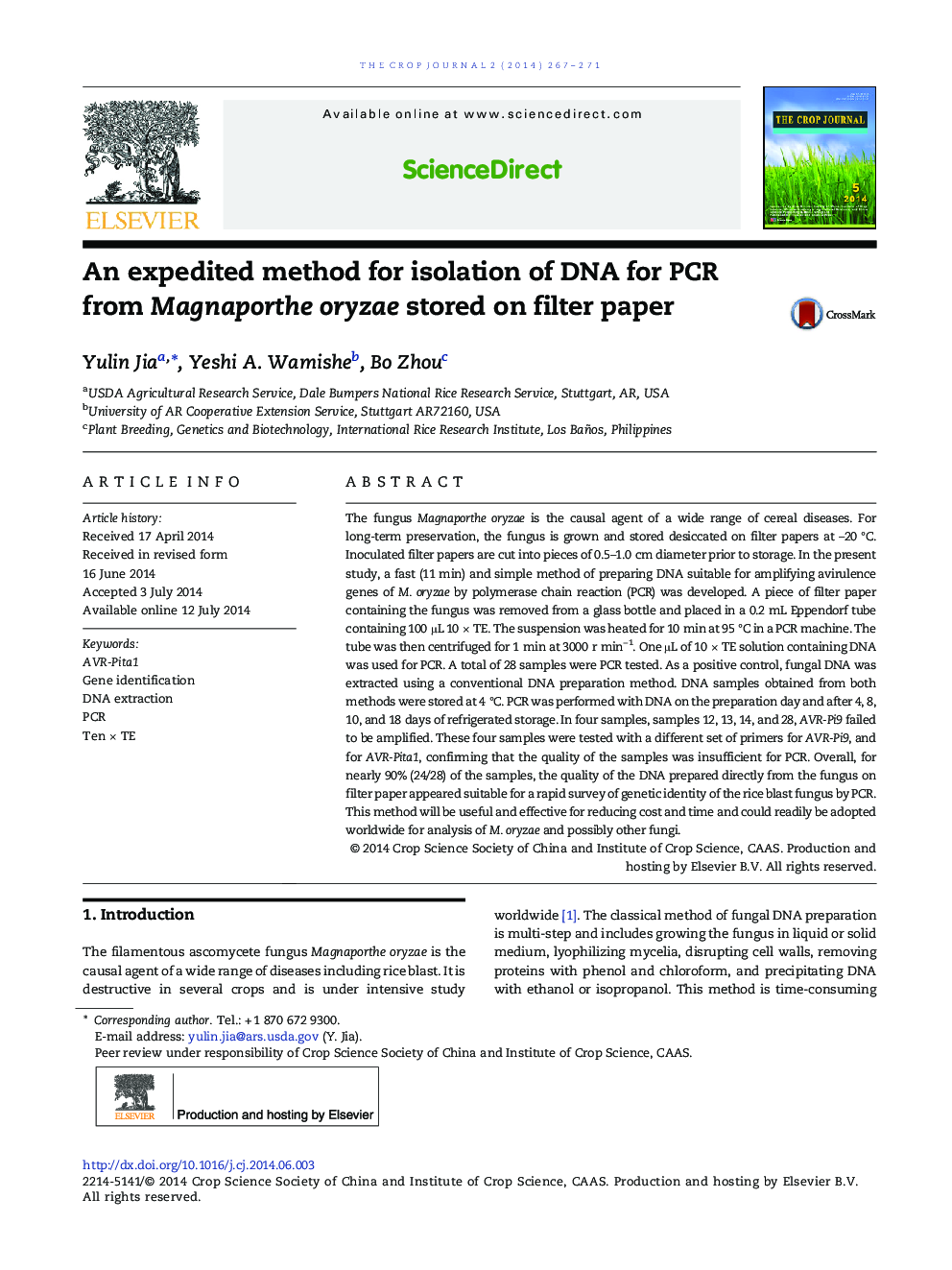| Article ID | Journal | Published Year | Pages | File Type |
|---|---|---|---|---|
| 2079508 | The Crop Journal | 2014 | 5 Pages |
The fungus Magnaporthe oryzae is the causal agent of a wide range of cereal diseases. For long-term preservation, the fungus is grown and stored desiccated on filter papers at –20 °C. Inoculated filter papers are cut into pieces of 0.5–1.0 cm diameter prior to storage. In the present study, a fast (11 min) and simple method of preparing DNA suitable for amplifying avirulence genes of M. oryzae by polymerase chain reaction (PCR) was developed. A piece of filter paper containing the fungus was removed from a glass bottle and placed in a 0.2 mL Eppendorf tube containing 100 μL 10 × TE. The suspension was heated for 10 min at 95 °C in a PCR machine. The tube was then centrifuged for 1 min at 3000 r min− 1. One μL of 10 × TE solution containing DNA was used for PCR. A total of 28 samples were PCR tested. As a positive control, fungal DNA was extracted using a conventional DNA preparation method. DNA samples obtained from both methods were stored at 4 °C. PCR was performed with DNA on the preparation day and after 4, 8, 10, and 18 days of refrigerated storage. In four samples, samples 12, 13, 14, and 28, AVR-Pi9 failed to be amplified. These four samples were tested with a different set of primers for AVR-Pi9, and for AVR-Pita1, confirming that the quality of the samples was insufficient for PCR. Overall, for nearly 90% (24/28) of the samples, the quality of the DNA prepared directly from the fungus on filter paper appeared suitable for a rapid survey of genetic identity of the rice blast fungus by PCR. This method will be useful and effective for reducing cost and time and could readily be adopted worldwide for analysis of M. oryzae and possibly other fungi.
